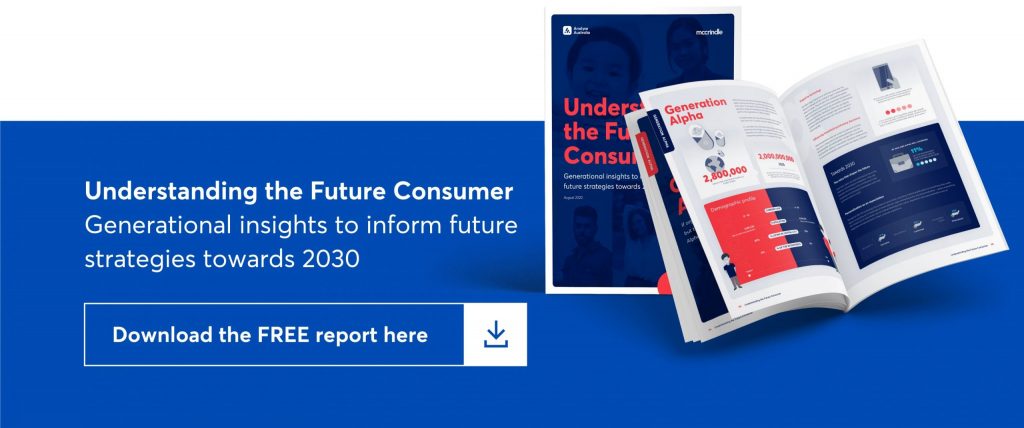By: McCrindle
As we entered a new financial year, this heralded a milestone of more than a year of living nationally in a COVID-19 world. While many organisations are attempting to uphold a state of business as usual, an analysis of the last financial year shows how the changes in consumer behaviour is set to shape the future of retail.
1. Armchair shopping is here to stay
Social distancing and various lockdowns have reshaped the traditional brick-and-mortar shopping experience. Government mandates to stay at home have reduced people’s desire to step outdoors, thereby accelerating the online shopping experience. Trends such as click and collect, now offered by almost half of Australian retailers, has become the new normal.1 Furthermore, consumer expectations have risen as a result, with many now expecting same day deliveries due to the convenience of online shopping and as the speed of consumption increases.
2. The rise of local retail
Urban activity is traditionally centred around the bustling city as the epicentre of commerce, retail and social activities. However, with many organisations having announced work-from-home policies over the last year, this has caused a rise in regional area appeal and a drought in foot traffic in central business districts.
With the need to commute on a halt, Australians are looking to local businesses to fulfil their needs. Neighbourhoods that were once typically lighter on foot traffic during business hours have enjoyed remote workers looking to local providers for their groceries, a coffee or a bite to eat.
Furthermore, initiatives encouraging supporting local brands and businesses have boomed over the last year. In response to the bushfires early last year, the local shop movement saw Aussies championing local businesses and their offerings. A Roy Morgan poll in July 2020, showed that more than half of Australians have a higher preference for Australian made products since the start of the pandemic.2
3. Sustainability is more important than ever
The trend of sustainability practices existed long before COVID-19 but remains strong in the hearts and minds of consumers. The evidence is clear: 57% of consumers are willing to change their shopping habits to reduce negative environmental impact. Furthermore, Australian retailers are starting to listen by undertaking activities to reduce emissions or develop a publicly stated commitment.3 If organisations want to remain relevant for future consumers, then prioritising sustainability will be essential.
1 https://auspost.com.au/business/business-ideas/selling-online/six-online-shopping-trends-shaping-ecommerce-industry-australia
2 https://business.nab.com.au/made-in-australia-can-buy-local-maintain-its-momentum-43015/
3 https://assets.kpmg/content/dam/kpmg/au/pdf/2021/australian-retail-outlook-2021-report.pdf
Article supplied with thanks to McCrindle.
About the Author: McCrindle are a team of researchers and communications specialists who discover insights, and tell the story of Australians – what we do, and who we are.
Feature image: Photo by Jordan Nix on Unsplash

